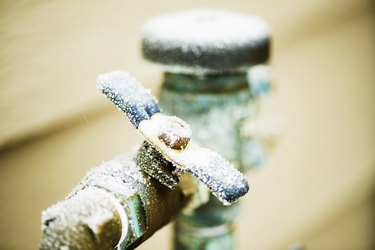Protecting Pipes from Freezing Issues: Critical Strategies
Protecting Pipes from Freezing Issues: Critical Strategies
Blog Article
This great article further down in relation to Preventing and dealing with frozen pipes is extremely compelling. Don't skip it.

Winter can ruin your pipes, specifically by freezing pipelines. Here's how to avoid it from taking place and what to do if it does.
Intro
As temperature levels decline, the threat of icy pipes boosts, potentially resulting in costly repairs and water damages. Recognizing exactly how to avoid frozen pipes is important for property owners in cold environments.
Understanding Icy Pipes
What causes pipelines to freeze?
Pipes ice up when subjected to temperatures listed below 32 ° F (0 ° C) for prolonged durations. As water inside the pipelines freezes, it increases, putting pressure on the pipeline wall surfaces and possibly triggering them to burst.
Dangers and damages
Frozen pipelines can lead to water supply interruptions, residential or commercial property damages, and costly repair services. Ruptured pipes can flooding homes and cause comprehensive structural damages.
Signs of Frozen Pipes
Recognizing icy pipes early can prevent them from breaking.
How to recognize icy pipes
Search for reduced water flow from faucets, uncommon odors or noises from pipes, and noticeable frost on subjected pipelines.
Prevention Tips
Insulating at risk pipelines
Cover pipelines in insulation sleeves or utilize warm tape to secure them from freezing temperature levels. Focus on pipelines in unheated or external areas of the home.
Heating strategies
Keep indoor spaces properly heated up, specifically areas with plumbing. Open up cupboard doors to permit cozy air to flow around pipes under sinks.
Shielding Exterior Pipes
Yard tubes and outside taps
Disconnect and drain pipes garden hoses prior to wintertime. Mount frost-proof spigots or cover outdoor taps with shielded caps.
What to Do If Your Pipes Freeze
Immediate activities to take
If you presume frozen pipelines, keep faucets open to eliminate stress as the ice melts. Make use of a hairdryer or towels taken in hot water to thaw pipes slowly.
Long-Term Solutions
Structural changes
Consider rerouting pipes away from exterior wall surfaces or unheated areas. Add additional insulation to attic rooms, basements, and crawl spaces.
Upgrading insulation
Purchase top notch insulation for pipelines, attics, and walls. Correct insulation aids preserve constant temperature levels and decreases the risk of frozen pipelines.
Final thought
Avoiding frozen pipes needs aggressive procedures and fast actions. By comprehending the reasons, indicators, and preventive measures, homeowners can secure their plumbing during cold weather.
6 Proven Ways to Prevent Frozen Pipes and Protect Your Home
Disconnect and Drain Garden Hoses
Before winter arrives, start by disconnecting your garden hoses and draining any remaining water. Close the shut-off valves that supply outdoor hose bibs and leave the outdoor faucet open to allow any residual water to drain. For extra protection, consider using faucet covers throughout the colder months. It’s also important to drain water from any sprinkler supply lines following the manufacturer’s directions.
Insulate Exposed Pipes
Insulating your pipes is an effective way to prevent freezing. Pipe insulation is readily available at home improvement stores and is relatively inexpensive. Pay close attention to pipes in unheated areas such as the attic, basement, crawl spaces, or garage. Apply foam insulation generously to create a buffer against the cold. You can also wrap your pipes in heat tape or thermostat-controlled heat cables for added warmth.
Seal Air Leaks
Inspect your home for any cracks or openings that could let in cold air. Seal any holes around the piping in interior or exterior walls, as well as the sill plates where your home rests on its foundation. Additionally, make sure to keep your garage door closed unless you’re entering or exiting. Leaving it open creates a significant air leak that can lead to frozen pipes.
Allow Warm Air Circulation
During cold snaps, it’s essential to allow warm air to circulate evenly throughout your home. Leave interior doors ajar to promote better airflow. Open kitchen and bathroom cabinets to help distribute heat consistently around the rooms. If you have small children or pets, be sure to remove any household chemicals or potentially harmful cleaners from open cabinets for safety.
Let Faucets Drip
A small trickle of water can make a big difference in preventing ice formation inside your pipes. When temperatures drop significantly, start a drip of water from all faucets served by exposed pipes. This continuous flow helps prevent the water from freezing. Additionally, running a few faucets slightly can relieve pressure inside the pipes, reducing the chances of a rupture if the water inside does freeze.
https://choateshvac.com/6-proven-ways-to-prevent-frozen-pipes-and-protect-your-home/

Hopefully you enjoyed our article about Helpful Tips to Prevent Frozen Pipes this Winter. Thanks for finding the time to browse our piece of content. Loved our write-up? Please share it. Help others discover it. Bless you for your time. Kindly come by our website back soon.
Click Here Report this page